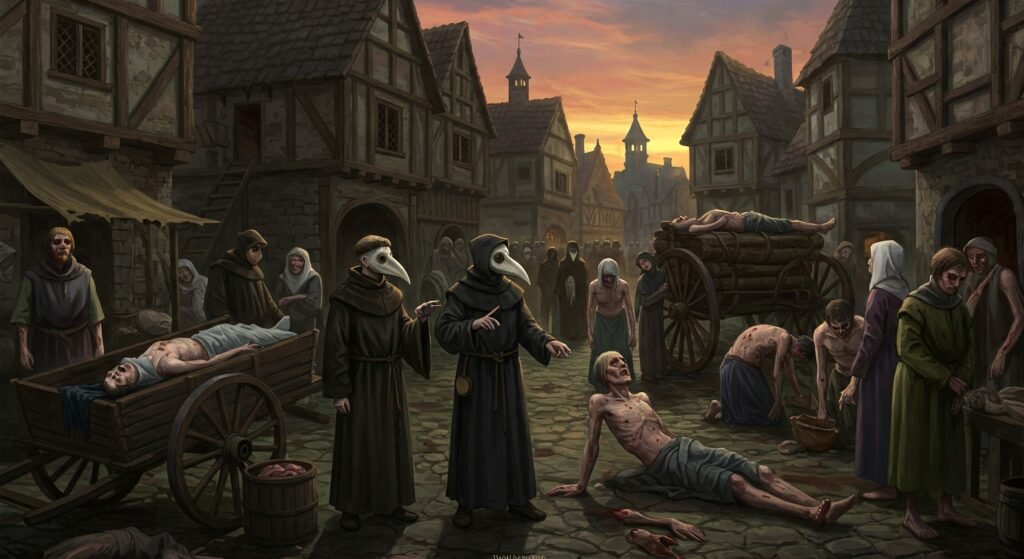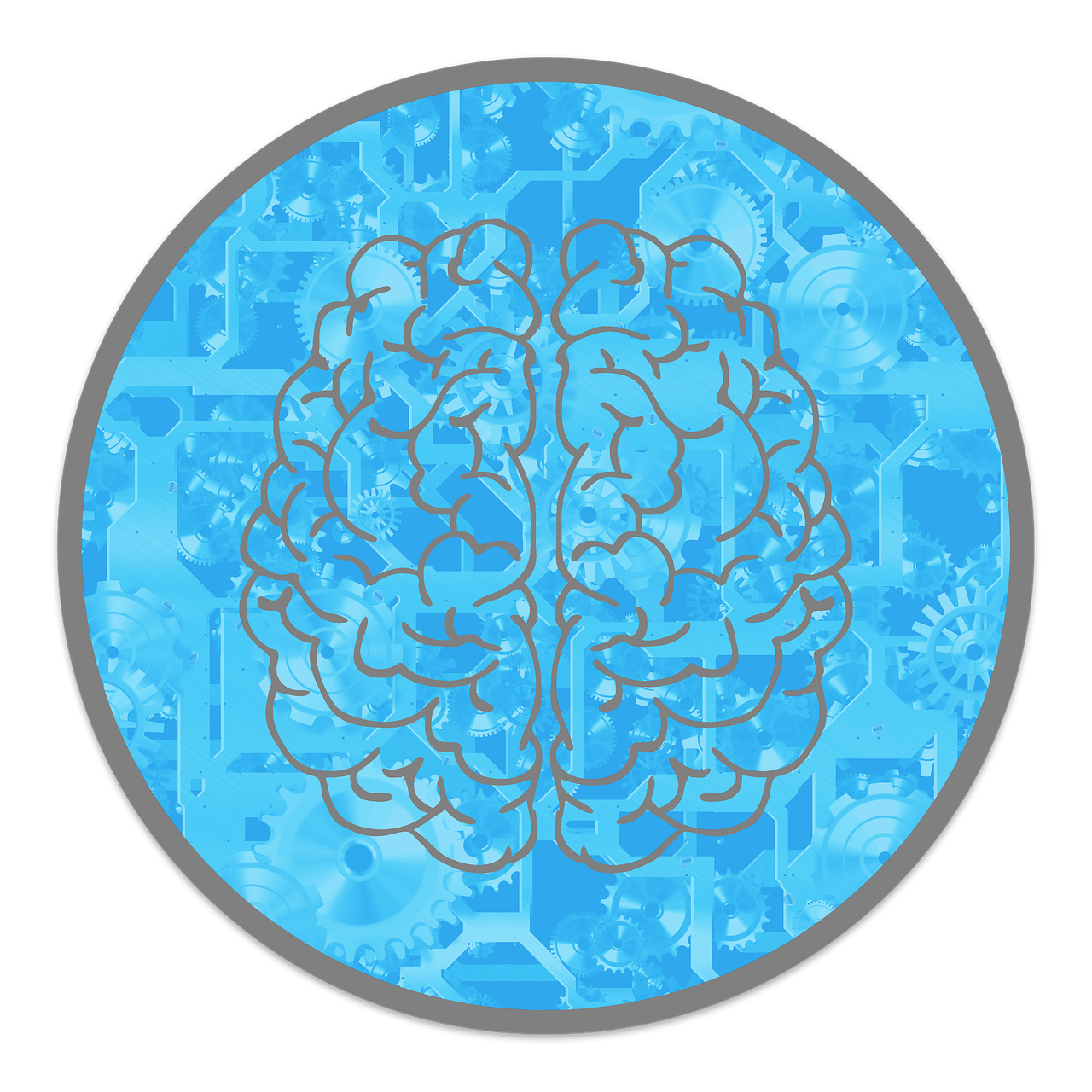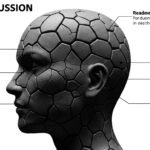
Disasters—pandemics, wars, wild weather—don’t just wreck stuff. They rewrite the script.
Sure, they bring chaos.
But they also spark change: new ideas, new rules, and sometimes, a whole new world order.
From the Black Death to world wars, history’s biggest messes often lead to major makeovers.
Think of them like the messy breakups in a drama series—painful, yes, but also the start of something completely different.
Let’s look at how disaster didn’t just break things—it rebuilt the world.
1. The Black Death (1347–1351): Reshaping Europe’s Economy and Society
A Pandemic That Killed Millions—and Ended Feudalism
The Black Death wasn’t just a deadly pandemic—it was a game-changer.
Wiping out nearly a third of Europe’s population in four years, it didn’t just end lives, it ended the old world order.
Here’s how it flipped the script:
- Labor shortage = Higher wages: Peasants had the upper hand, and for once, their paychecks did matter.
- Goodbye feudalism: The old feudal system crumbled, paving the way for a new, emerging middle class.
- Science over superstition: The pandemic sparked a demand for real science, leaving old superstitions in the dust.
- Cities got busy: Survivors fled to urban areas for better opportunities, speeding up urbanization.
The plague didn’t just take lives—it reshaped Europe’s economy and society like a reality TV makeover.
2. The Great Fire of London (1666): Birth of Modern Urban Planning

Destruction That Sparked Innovation
The Great Fire of London burned through 13,000 homes in just four days, but out of the ashes, a new city arose.
What came from the destruction?
- Fire-resistant buildings: London swapped out wooden homes for brick and stone, making the city less of a fire trap.
- Better street planning: The streets got reorganized, and London became a model for modern urban design.
- Emerging emergency services: Insurance markets and fire brigades were born—early versions of today’s emergency services.
The fire didn’t just scorch the city—it sparked innovation.
3. The 1918 Influenza Pandemic: Public Health Systems Reimagined
A Global Tragedy with Modern Lessons
The Spanish Flu wasn’t just a tragedy—it was a wake-up call.
Infected 500 million people and killed up to 50 million, pushing the world into a reckoning with how we handle public health.
How it changed the game:
- Public health systems got real: Governments realized that central health agencies were essential to fight global crises.
- International collaboration: The Spanish Flu was the catalyst for the creation of the World Health Organization (WHO), putting global health on the map.
- Transparency matters: The pandemic highlighted the need for open communication and teamwork when it comes to health.
This was more than just a health crisis—it was the birth of modern public health systems.
4. The Hiroshima and Nagasaki Bombings (1945): Nuclear Ethics and Cold War Dynamics
Two Bombs That Redefined Warfare
The bombings of Hiroshima and Nagasaki in 1945 didn’t just end World War II—they introduced the world to nuclear warfare.
Here’s the fallout:
- War ended, but at a terrible price: Over 200,000 people died, and the nuclear age was born in fire and fear.
- Cold war drama: The bombs set the stage for the Cold War and a dangerous arms race between the U.S. and the Soviet Union.
- Moral questions: They raised tough questions about the ethics of using technology for mass destruction.
- Anti-nuclear movements: This tragedy fueled global protests and treaties like the Non-Proliferation Treaty (NPT), aiming to curb nuclear weapons.
The bomb didn’t just change history—it changed the very way we think about war.
5. Chernobyl Disaster (1986): The Power of Transparency and Environmental Safety

The World’s Wake-Up Call on Nuclear Safety
Chernobyl wasn’t just a nuclear accident—it was a global alarm bell.
The 1986 disaster in the Soviet Union exposed the dangers of nuclear power and government secrecy.
What changed after the meltdown:
- Safety reforms: International nuclear safety standards, courtesy of the IAEA, got a major overhaul.
- Government secrecy exposed: The cover-up showed how dangerous lack of transparency could be—and played a part in the Soviet Union’s eventual collapse.
- Environmental impact: Chernobyl helped spark the global environmental movement and opposition to nuclear energy.
In short? Chernobyl didn’t just melt down—it cracked open the debate on nuclear safety, politics, and our environmental future.
6. Hurricane Katrina (2005): Exposing Social Inequality and Infrastructure Failures
A Storm That Shook America
When Hurricane Katrina struck New Orleans, it wasn’t just a natural disaster—it was a glaring spotlight on America’s infrastructure and inequality.
Key takeaways:
- Racial and economic disparities: The disaster laid bare how certain communities were left behind in emergency response.
- FEMA’s wake-up call: The storm forced FEMA and other agencies to overhaul disaster management and response protocols.
- Climate change conversations: Katrina sparked heated debates about climate change, urban planning, and how prepared we are for the next big storm.
Katrina wasn’t just a storm—it was a reckoning for America’s systems and priorities.
7. COVID-19 Pandemic (2020–): A Global Reset Still Unfolding
The Pandemic That Changed Everything
COVID-19 didn’t just change health systems—it changed life as we knew it.
And the effects are still unfolding.
Here’s how it’s rewriting the script:
- Work from home (WFH) revolution: Remote work, already on the rise, became the norm. The office? So 2019.
- Digital transformation: The pandemic accelerated the shift to telemedicine, online education, and virtual everything.
- Mental health on the map: It brought mental health, work-life balance, and universal healthcare debates to the forefront.
- Global cooperation in crisis: COVID also showed the need for international collaboration in science, vaccine development, and crisis management.
COVID didn’t just change the way we work or study—it changed the way we see the world, our health, and each other.
Common Threads in History’s Biggest Disasters

From plagues to power outages, every world-shaking disaster seems to follow a familiar plot twist: chaos first, change second.
Here’s what keeps showing up when everything falls apart:
Systemic reform
Disasters don’t just break stuff — they spotlight what was already cracked.
Whether it’s healthcare gaps during a pandemic or weak infrastructure during a storm, crises force governments and leaders to stop ignoring the leaks and start fixing the pipes.
Technological advancement
When things go wrong, humans get creative.
We got better vaccines after pandemics, stronger buildings after fires, and tech upgrades after every crisis. Disasters push us to stop procrastinating and finally level up.
Cultural and social awakening
After a major disaster, society tends to ask: Who are we, really?
From rethinking justice after Hurricane Katrina to valuing mental health post-COVID, we often come out of crises with clearer values and a new social compass.
Conclusion: From Tragedy to Transformation
Disasters don’t just break things — they build turning points.
From the Black Death to COVID-19, every crisis has pushed humanity to rethink what matters, fix what’s broken, and imagine what’s next.
They leave scars, yes — but also blueprints.
We learn about resilience like it’s our side quest, discover innovation under pressure, and realize that unity and humility aren’t soft skills — they’re survival tools.
History proves it again and again: the world doesn’t bounce back from disaster the same — it evolves.
So when the next big shake-up hits (and it will), maybe we can channel our inner Ted Lasso: stay curious, stay kind, and keep learning.
Because how we respond today shapes the world we’ll live in tomorrow.



